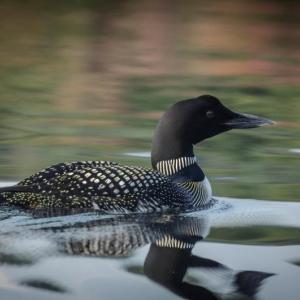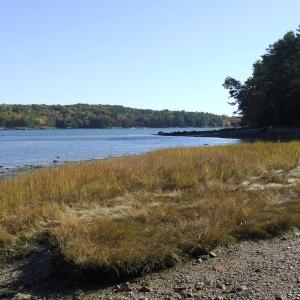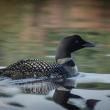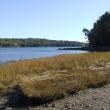A Maine “Safety Net” for Nature and Climate
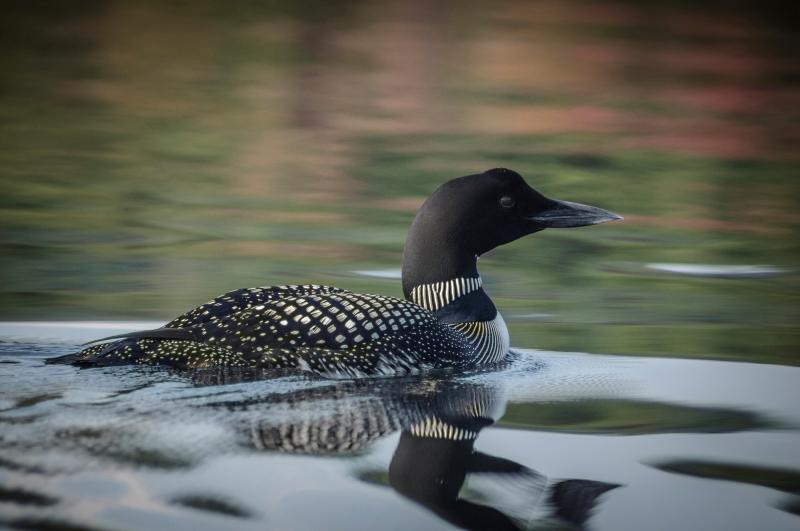 Common loons are one of the most iconic of Maine’s wildlife that will benefit from the safety net of a Land for Maine’s Future bond. Photo by Ted Anderson, courtesy of the Natural Resources Council of Maine
Common loons are one of the most iconic of Maine’s wildlife that will benefit from the safety net of a Land for Maine’s Future bond. Photo by Ted Anderson, courtesy of the Natural Resources Council of Maine
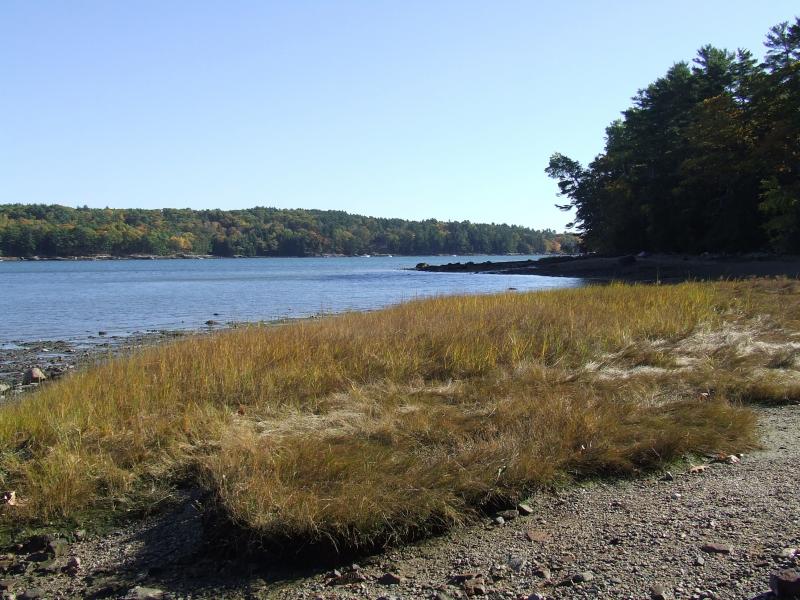 Dodge Point, a popular local preserve, was protected using past Land for Maine’s Future bond funds. Courtesy of Allison Wells
Dodge Point, a popular local preserve, was protected using past Land for Maine’s Future bond funds. Courtesy of Allison Wells
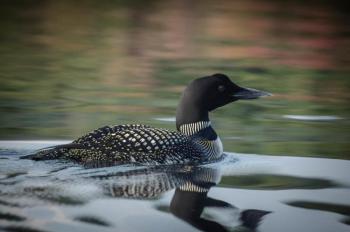 Common loons are one of the most iconic of Maine’s wildlife that will benefit from the safety net of a Land for Maine’s Future bond. Photo by Ted Anderson, courtesy of the Natural Resources Council of Maine
Common loons are one of the most iconic of Maine’s wildlife that will benefit from the safety net of a Land for Maine’s Future bond. Photo by Ted Anderson, courtesy of the Natural Resources Council of Maine
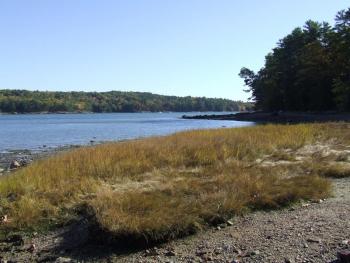 Dodge Point, a popular local preserve, was protected using past Land for Maine’s Future bond funds. Courtesy of Allison Wells
Dodge Point, a popular local preserve, was protected using past Land for Maine’s Future bond funds. Courtesy of Allison Wells
The 2020 World Wildlife Fund Living Planet Report that came out two weeks ago paints a dire picture of the state of the world’s biodiversity: a nearly 70% average decline in wildlife populations since 1970. A United Nations report that came out this week places the blame on virtually all nations around the world who signed a biodiversity treaty a decade ago but have largely failed to live up to the pledges of that treaty.
But a new scientific paper recently published in a journal called Science Advances provides a vision for what needs to be done to stop and reverse the declines in biodiversity. The authors show that the most important areas for conservation of biodiversity show major overlap with the most important areas for climate stabilization including our own New England forests.
The paper, “A ‘Global Safety Net’ to Reverse Biodiversity Loss and Stabilize Earth’s Climate,” presents the results of a unique global analysis of where we need conservation most to deal with the simultaneous crises of biodiversity loss and climate change. The authors considered four biodiversity values: rare species sites, high biodiversity regions, large mammal landscapes, and areas with large areas of intact habitat. They overlaid the regions identified based on these values with protected and unprotected lands to gauge how much further land protection is needed.
The authors estimate from this analysis that stemming biodiversity loss and maintaining healthy wildlife populations and ecosystems will require an additional 30.6% of the land surface to become conservation lands. They go on to suggest that it could make sense for individual states to build their own state-level versions of the “safety net,” even specifically mentioning the idea of a Maine Safety Net. Research results like those shown in this paper make it abundantly clear that the proposed new Convention on Biodiversity target of protecting at least 30% of the global land base by 2030 must be adopted if we are to have any real chance of dealing with the crises of rapid biodiversity losses and climate change.
What does all of this have to do with birds and with us here in Maine?
Right here in our own amazing state we continue to see ongoing loss and degradation of the forests, wetlands, grasslands, and other habitat types that provide the nesting areas for the birds we love. Private organizations like land trusts and government agencies like the U.S. Fish and Wildlife Service work to protect and restore habitat to try to slow declines in their populations and sometimes to increase them. But they need resources to achieve the goals set out in a vision like the “Global Safety Net.”
Maine people have themselves decisively made their own feelings known about what we should do to get some of those resources for protecting our precious animals, plants, and special places. For more than 30 years, Mainers have passed a number of bonds to fund the Land for Maine’s Future (LMF) program in working order over the years, protecting more than 600,000 acres so far. So many of us have hiked, gone cross-country skiing, and birded on lands purchased with these monies. LMF, a key issue promoted and pushed for by the Natural Resources Council of Maine and other groups, leverages matching funds, making the States investment in this popular and vital land conservation program go even further.
NRCM and allies advocated for a bond that included $75 million for the Land for Maine's Future program. What a boon this would have been for bird and wildlife habitats, and for the people who share them. But COVID-19 meant the abrupt closure of the Legislature—before a final vote was taken on the Land for Maine’s Future bill. Sadly, prior to that, political maneuvering by the previous governor and his yes-men and -women who don’t care about ensuring our natural heritage is passed on to future generations prevented much needed LMF funded.
We must support land bonds and increased funding of government agencies focused on conservation and policies that take care of our natural landscapes and the animals and plants that rely on them, we will continue to see species disappear and climate change impacts get more severe. Our political leaders need to know that we want them to make sure that Maine has done its part to make its own “safety net” for reversing biodiversity declines and increasing climate stabilization.
If action isn’t taken now, soon it will be too late.
Jeffrey V. Wells, Ph.D., is a Fellow of the Cornell Lab of Ornithology and Vice President of Boreal Conservation for National Audubon. Dr. Wells is one of the nation's leading bird experts and conservation biologists and author of “Birder’s Conservation Handbook”. His grandfather, the late John Chase, was a columnist for the Boothbay Register for many years. Allison Childs Wells, formerly of the Cornell Lab of Ornithology, is a senior director at the Natural Resources Council of Maine, a nonprofit membership organization working statewide to protect the nature of Maine. Both are widely published natural history writers and are the authors of the book, “Maine’s Favorite Birds” and “Birds of Aruba, Bonaire, and Curaçao: A Site and Field Guide” from Cornell Press.
Event Date
Address
United States

